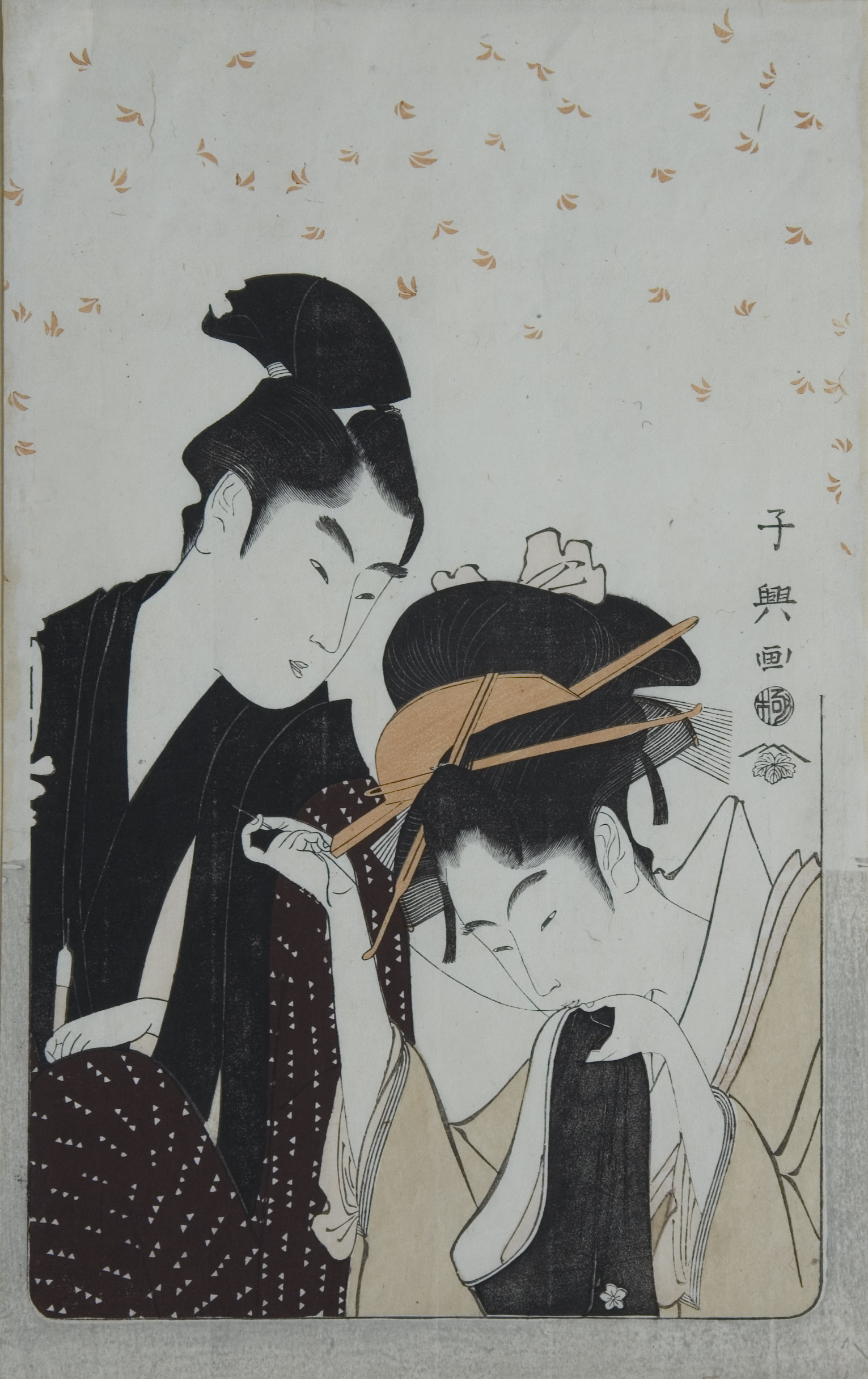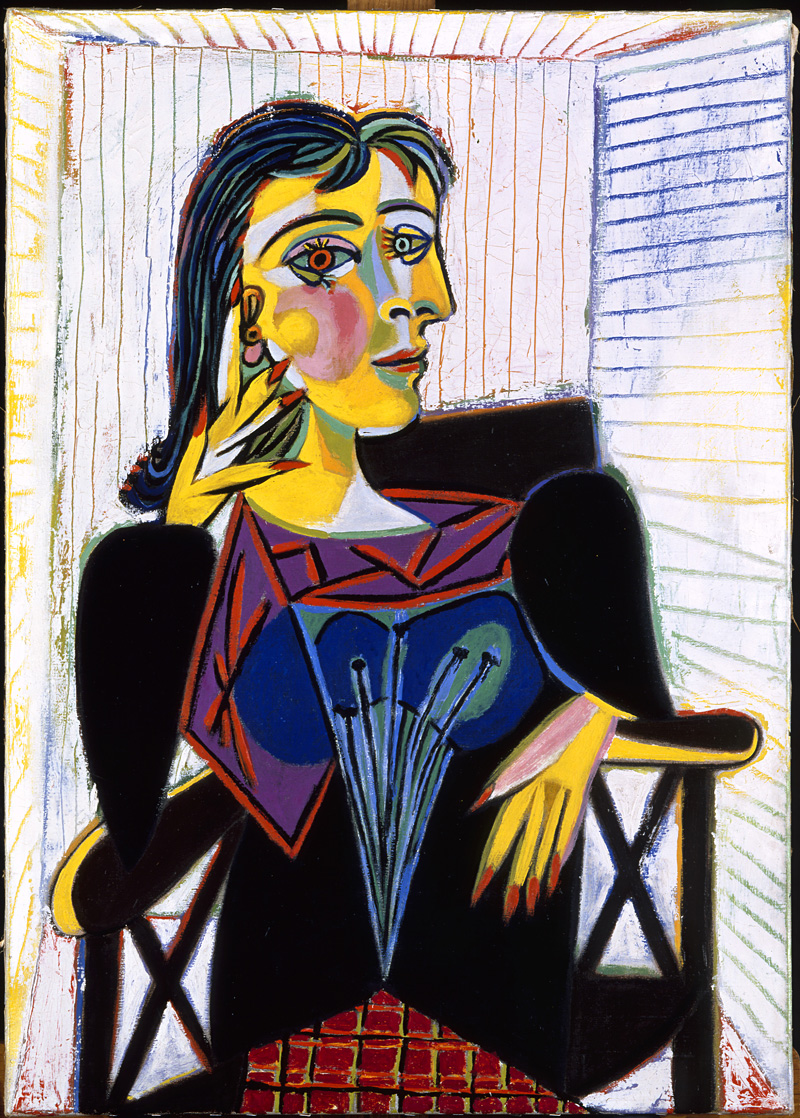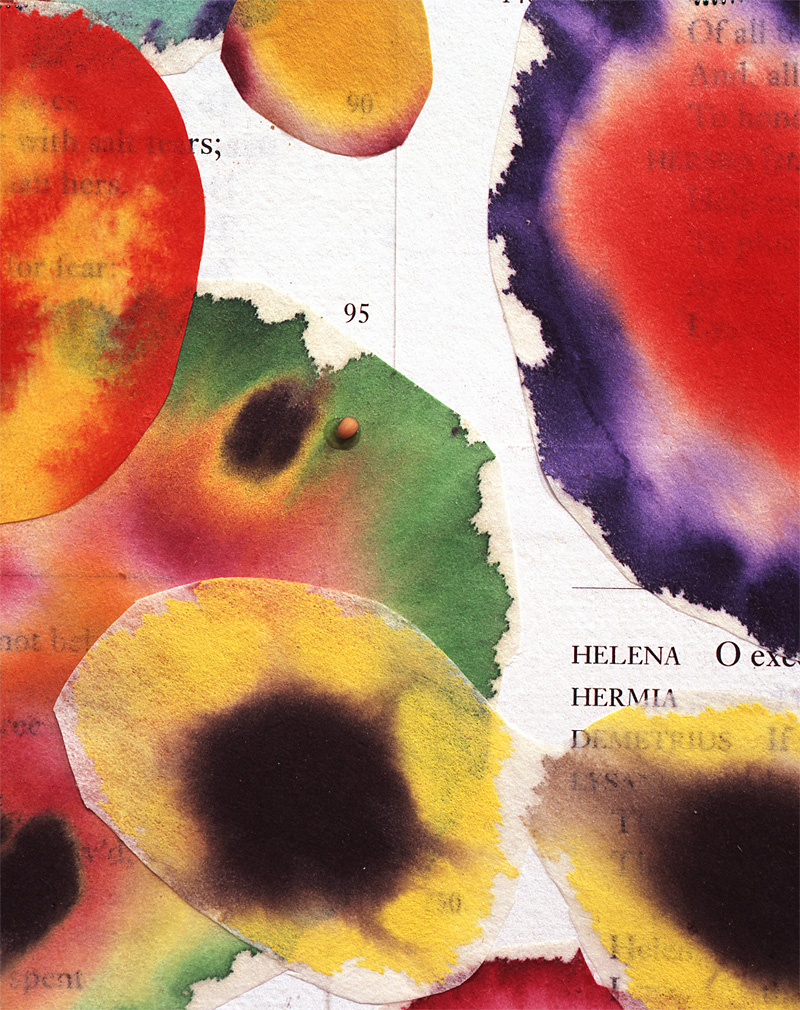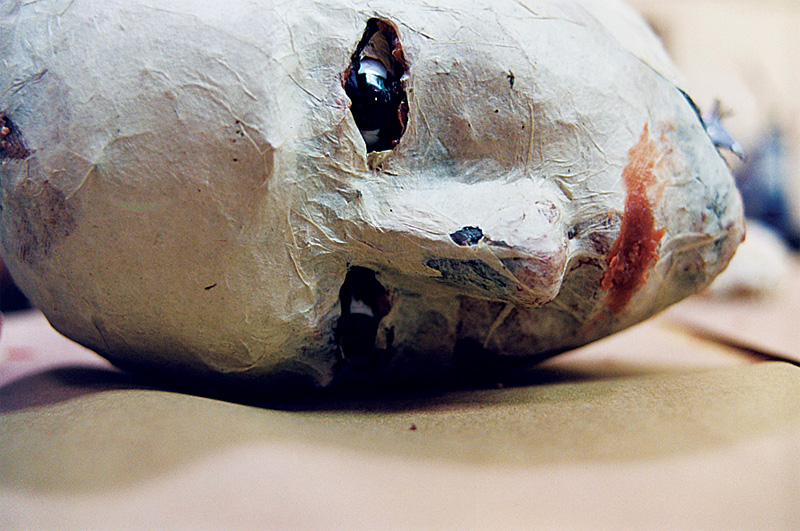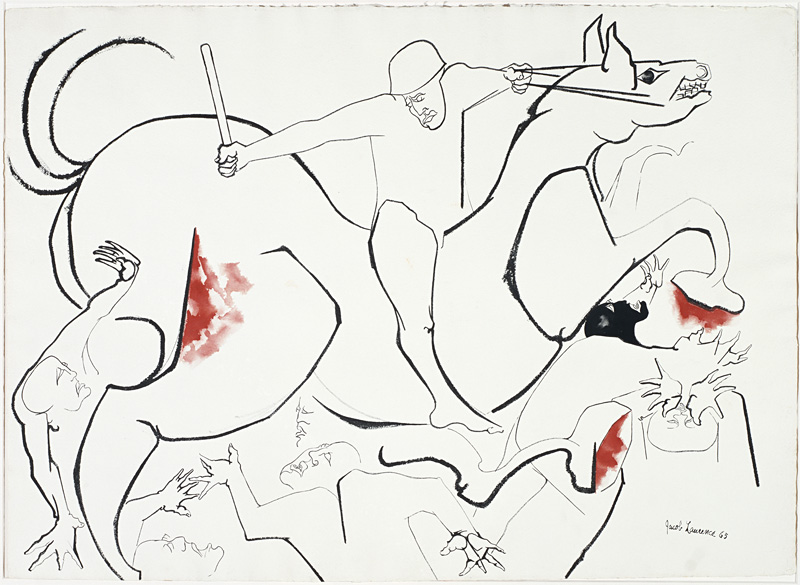You’ve seen the woodcut a thousand times—or so it seems. It is one of the most reproduced artworks of all time, its likeness photo-mechanically copied on posters, coffee cups, T-shirts, even on the Japan Rail Pass for tourists. Great Wave off Kanagawa by Hokusai is the most recognizable Japanese work of art because its graphic impact translates so well. Despite measuring roughly a single square foot in size, Great Wave rivals Géricault’s vast epic oil painting The Raft of the Medusa for its indelible vision of man in conflict with nature. Under the huge, overpowering Kanagawa wave, the stiff little skiff is like a twig that’s sure to be snapped within seconds.
Great Wave may seem ubiquitous, but in fact few high-quality original impressions of Hokusai’s tour de force remain. And the pristine early one now on view at SAAM, in the exhibit Fleeting Beauty, opens your eyes to the piece in a new way. Its spare design and geometry make it stand apart, even in four rooms of drop-dead beautiful prints.
The delicate, graded washes of ink pressed into the handmade paper fibers describe a heavy, mist-soaked sky—a very tough effect to pull off in a woodblock print, because it’s fiendishly tricky to keep the paint and pressure consistent over large areas of color. The stoic Mt. Fuji stands distant and tiny on the horizon, imparting stillness and focus to the composition. But the foreground moves fiercely with blue and white curvilinear patterns, breaking into claw-like cascades of lacy but menacing shapes at the edges of the massive waves. The turbulent waters overpower tossed wooden cargo boats, and within the valleys of surge, you recognize previously unseen, infinitesimal heads of boat rowers, human skulls scarcely visible above the ocean’s surface.
You only have a few weeks left to see Great Wave alongside 58 other gorgeous Japanese woodblock prints from the 18th and 19th centuries. “Fleeting Beauty” showcases the collection of the sharp-eyed and choosy Mary and Allan Kollar, Seattle public-school teachers who will be passing the works shown here to SAM in honor of the museum’s 75th anniversary.
A good third of the show is devoted to landscape prints by Hokusai and his younger follower Hiroshige, both of whom worked in the early-to-mid 1800s. The print quality is exquisite, as in Hokusai’s luminously spare Red Fuji, made from a still relatively unworn block, whose wood-grain patterns are visible in the tonal wash of the mountain glowing in sunlight.
In Hiroshige’s renowned Sudden Rain, Shono, the printing block is cut with pinpoint-thin parallel diagonal lines, creating an illusion of a gale-force rain, under which travelers attempt to cover themselves with shawls, hats, and an umbrella while they climb a countryside hill. The precision of these marks would be hard to achieve with a pen and ruler, let alone by cutting narrow ridges into the surface of a wood block.
Like his mentor, Hiroshige incorporated Western notions of a vanishing-point perspective in such elegant prints as Fujikawa, in which minuscule figures walk amid snowflakes down a village road that disappears over a hill into the near center of the design. It is the genius of these prints to combine abstract design with pictorial illusion. In Plum Garden at Kameido, Hiroshige exaggerated tree limbs and emphasized a flat picture plane, behind which we see a receding landscape of blooms and tiny figures behind a zigzag fence. Van Gogh copied this picture, and Hokusai and Hiroshige have inspired movements from Art Nouveau to Impressionism (Monet was an avid collector).
The superb catalog and wall texts by curator Catherine Roche place the prints in their historical context. And the works provide a tour through some eye-opening scenes: the early-1700s, black-and-white, erotic shunga prints of Torii Kiyonobu and the ukiyo—the “floating world” of the pleasure districts of Kyoto and Edo (now Tokyo)—a carnal playground for famous courtesans, outrageous kabuki actors, and teahouse waitresses who might be open to serving something steamier than tea. The woodblock prints were ads for glamour girls and theater stars, competing to catch the fickle eye of a trendy middle-class audience. The public desire for ever more colorful and unusual images drove the technical innovations in Japanese woodcuts, with prints eventually created from as many as 20 blocks and vivid new colors introduced from the West.
Like Hokusai’s Great Wave, the floating world was dangerous: It was addicted to thrills (cheap or expensive), and its art was another momentary pleasure. Yet some of it lasted for centuries. Thanks to this fascinating, extraordinarily lovely, must-see show, Seattle will have the thrill for all time.
